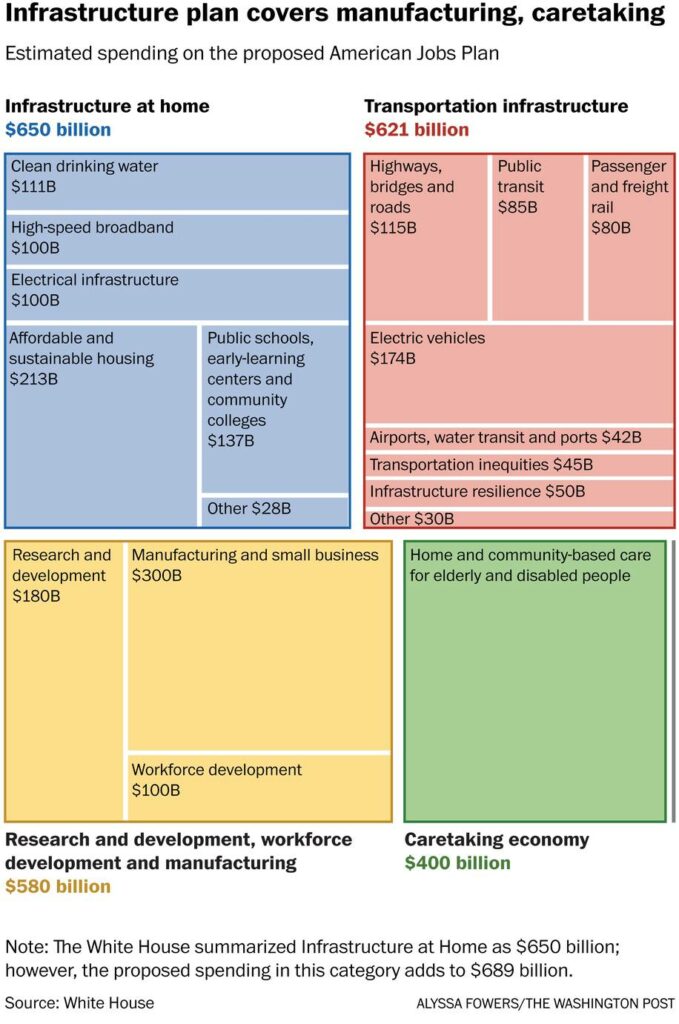President Joe Biden unveiled details surrounding his highly anticipated “American Jobs Plan,” which is expected to focus on America’s economic recovery once the pandemic subsides.
Speaking in Pittsburgh on Wednesday, Biden provided more insight into some of the provisions included in the $2.25 trillion jobs and infrastructure plan. The spending plan, which is expected to span over a duration of eight years, would be paid for within 15 years by increasing the corporate tax rate to 28%, and implementing measures to curb the offshoring of profits.
Biden’s latest announcement marks the second initiative following the successful passage of the $1.9 trillion Covid-19 stimulus bill earlier in March. Shifting its focus onto a post-pandemic economic recovery, the Biden administration plans to first address the country’s deteriorating infrastructure and increasing risks of climate change, and then move onto improving education and increase healthcare coverage and paid leave. The second part of the spending package is expected to be unveiled “in a few weeks.”

According to a fact sheet released by the White House on Wednesday, Biden’s plan will allocate $650 billion towards “infrastructure at home,” with $213 billion going towards building and retrofitting over 2 million homes for low-income Americans across the US. Another $111 billion would go towards clean drinking water, while $100 billion would be invested in delivering universal broadband internet for over 35% of rural households that lack access to high-speed internet. The proposal also calls for an investment of $137 billion towards building and upgrading public schools, community colleges, and child-care facilities.
The Biden administration plans to allocate $621 billion towards the country’s deteriorating transportation infrastructure, with $115 billion for the revamping of highways and roads, and $85 billion for modernizing public transit. In addition, $174 billion would be earmarked for grant and incentive programs for both both the private sector and state and local governments to build a network of 500,000 electric vehicle charing stations before the end of the decade.
In order to address the growing threat of climate change, the Biden administration revealed it would set aside $580 billion for research and development, and manufacturing and training. The spending plan would invest $180 billion towards clean energy and emission reductions, as well as increase climate-focused research. The plan would also allocate $50 billion towards domestic semiconductor production, in a bid to incentivize companies to localize manufacturing.
Lastly, the Biden administration would also focus on funding America’s health care economy, earmarking a total of $400 billion towards increasing access to care for seniors and people with disabilities. Joe Biden also plans to make improvements to working conditions in the healthcare sector, including wage and benefit increases for caretakers.
Although certainly ambitious, Biden’s spending plan will likely be met with opposition, especially if it relies on funding from tax hikes. Although the GOP is supportive of improving transportation infrastructure and increasing broadband access, the Republicans will for the most part oppose the proposed tax increases if it’s part of the process.
Information for this briefing was found via WH.gov and the Washington Post. The author has no securities or affiliations related to this organization. Not a recommendation to buy or sell. Always do additional research and consult a professional before purchasing a security. The author holds no licenses.









